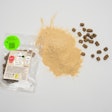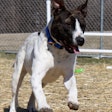The key to a smooth petfood plant is being proactive in all areas of the operation. However, oftentimes in our industry, we find significant attention spent on the extrusion cost center while others are overlooked-until plant capacity is reduced.
Step-by-step guide
Indeed a well-designed and properly commissioned petfood dryer should operate daily for many years with very little trouble. However, for those challenging days, a concise troubleshooting guide is beneficial to get the dryer back into production. Plant personnel can use the "cut-out" troubleshooting guide in this article to diagnose the problem. The guide also provides step-by-step actions to correct the problem.
As an operator faces problems with a petfood dryer, he must understand the dryer is a system of individual components. Key individual components include:
- The heat source;
- Process fans;
- Product conveyors; and
- The process controls.
Process changes to any of these individual components will affect the entire drying system. The design of a modern petfood dryer is significantly more complex than one of five years prior. This complexity is most evident in the control packages available today. Such control packages are very complex and may be integrated into the entire production line. The controls package may self-diagnose problems in the dryer and offer possible solutions. This type of system may be very beneficial. However, it is still critical that the operator possess a firm understanding of dryer basics. This brings us back to the black box approach to drying.
Black box approach
In this black box approach the wet petfood enters into and passes through the dryer, discharging opposite the entrance. Simultaneously, the hot process air enters in the bottom and discharges at the top. Modern petfood dryers are custom designed and fabricated specifically to function in a pre-defined window of operation. This window of operation is developed for a specific family of products having known characteristics.
The more important product characteristics are:
- The throughput capacity;
- Product size;
- Bulk density; and
- The evaporative loading on the dryer.
The drying variables that a plant operator may freely adjust are:
- Retention time;
- Temperature of the process air; and
- Process airflow-to a lesser extent.
Process airflow is generally pre-set by the dryer manufacturer at the design stage and adjusted by a qualified service technician during the installation stage.
Design engineers choose individual components such as the size and number of recirculation air fans, the exhaust system, the heat source and the product conveyor with great care. With this in mind, plant personnel should exercise caution when making irreversible changes that will affect the time, temperature and airflow balance.
Attached is a basic troubleshooting guide which covers the more common problems encountered with petfood dryers. It can be cut out and hung up or filed for future reference. To use this guide follow along the top of the guide until you find your problem. Then, in numeric order, begin checking the possible cause of the problem until you find it and take corrective action.
Hardware troubleshooting
The drying hardware represents those components that one can physically touch. Most often troubleshooting these items is rather straightforward. However, it does require a solid mechanical mindset.
A gas-fired dryer that fails to light its combustion burners is a good example of a hardware problem. For this example, using the troubleshooting guide, we would first confirm the incoming gas pressure is within specification. After the gas pressure is confirmed to be within specification one would move down the list, to confirm operation of the flame rod, pilot light or spark plug, ignition controls, combustion blower, etc.
Process troubleshooting
Troubleshooting the drying process is more difficult and requires a more thorough understanding of the machine's operation. An example of troubleshooting a process problem is the final product discharge moisture has decreased by 1.3%, even though the petfood line is running "just like yesterday." An experienced operator would immediately reduce the temperature of the process air.
The intention of the attached guide is to provide more than suggested actions. It also offers operators insight as to how other key process variables interact. What variable has triggered the operator to decrease the process air temperature? Has the product retention time inside the dryer been changed? Has the process airflow changed in either volume or quality? How has the extruder operation changed since yesterday?
Of the time, temperature, airflow relationship, undoubtedly process airflow is the most intangible and misunderstood. Uneven bed loading of product at the dryer inlet will result in uneven airflow and uneven final product moisture. A more significant source of improper airflow would be misplacement of internal doors. Misplacement of internal doors during routine cleaning operations will have very significant impact on the process airflow and the dryer's capabilities.
The key to trouble-free dryer operation is for operators to have a firm understanding of the basics. The economics of scale dictate that modern petfood lines produce at capacities up to 12,000-15,000 kg/hr. Such high-capacity lines are being made available by a new generation of extruders and dryers. The economics of scale reward high-capacity production lines. However, with this benefit comes more risk: When a production line is down for even short periods of time, a large amount of production is lost. Finally, when questions arise regarding dryer operation, do not hesitate to contact the original equipment vendor's service department for advice and recommendations.


















